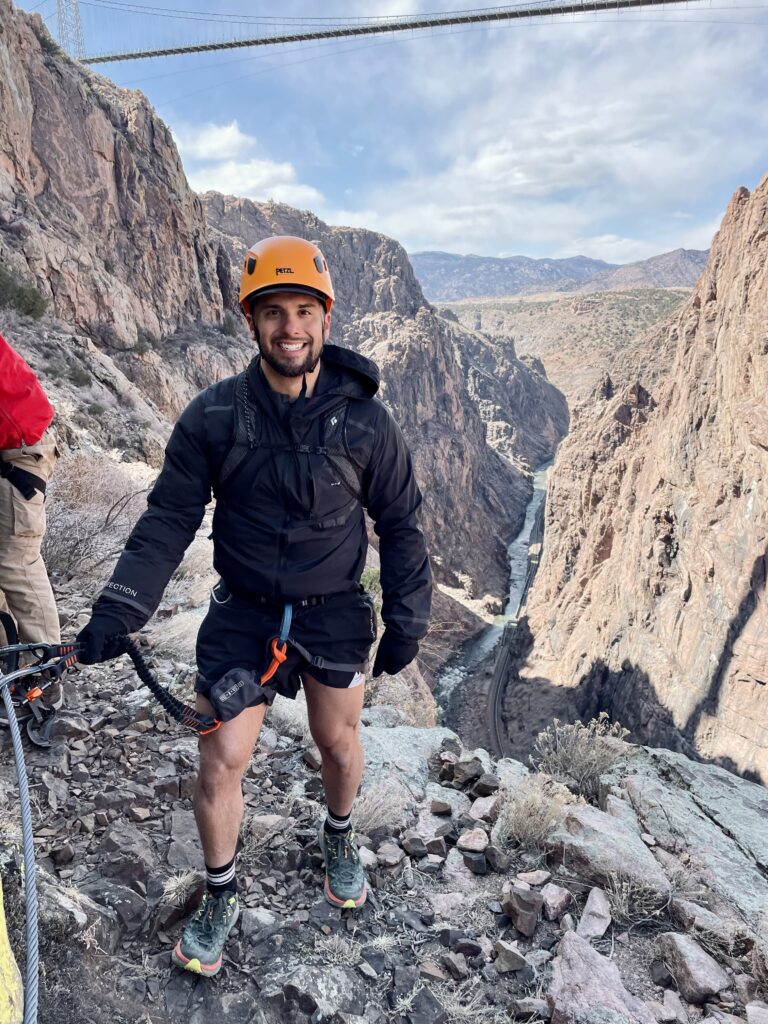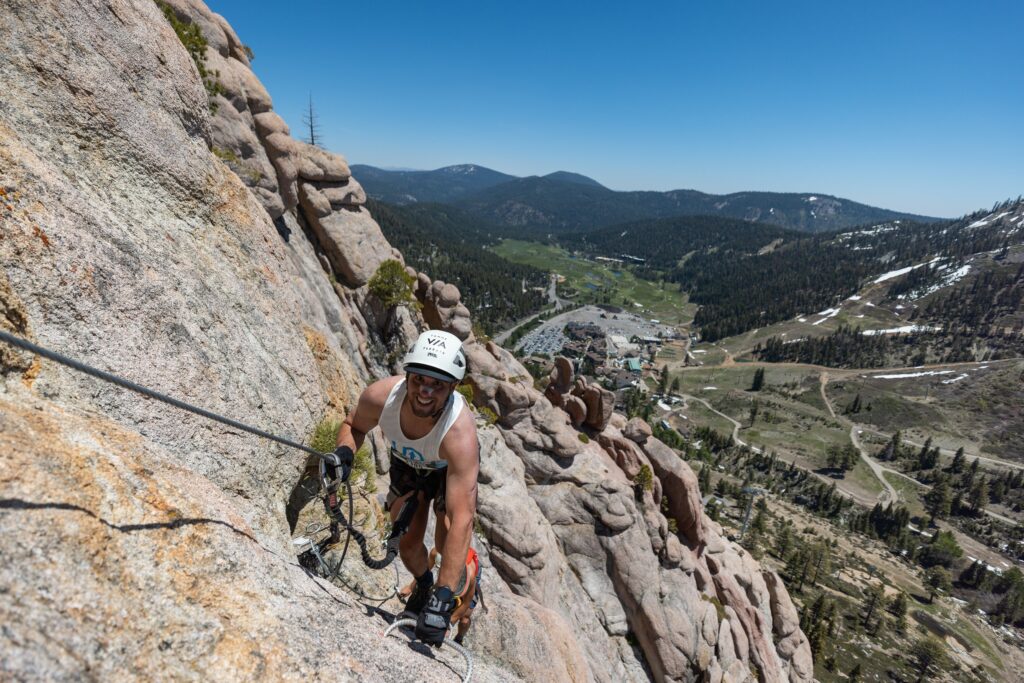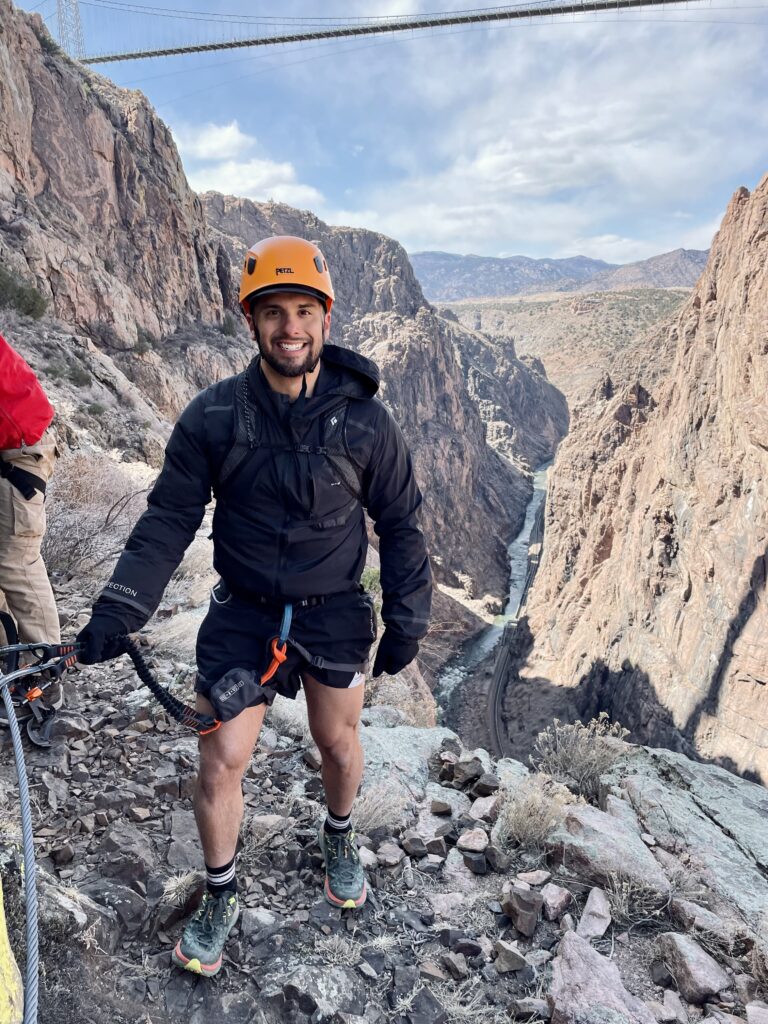After almost a month removed from the seventh edition of the Broken Arrow Skyrace, I’ve finally taken the time to sit down and reflect on my experience at this world class event. It was difficult to put words to paper given how much emotion I had wrapped up in just one weekend, but here we are.
Broken Arrow takes place on hallowed ground in the heart of Olympic Valley. It is a pristine alpine valley, surrounded in part by Granite Chief & Washeshu Peaks to the north and Lake Tahoe just a stones throw away to the south. Dylan Bowman described Olympic Valley as the “Wrigley Field” of trail and ultra-running, where over a two-week period in June, community members of the greatest sport on the planet gather for Broken Arrow followed by the Western States 100.
As one of the few true “sky races” in the U.S, Broken Arrow offers a myriad of distance options from the 46K to the Vertical Kilometer. This year, I chose to participate in the Ironface Challenge, the most technical of the Broken Arrow courses and one of their newer races. Peers, community members and friends have all asked me, “what is Ironface?”
The best way to describe Ironface is a multi-discipline alpine race where athletes utilize both running and technical climbing abilities. For context, Ironface is unique in that there are no other races like this in North America that leverage a Via Ferrata component. Via Ferrata, which translates from Italian to English as “Iron Way,” is a method of rock climbing, where climbers ascend a wall on a series of metal rungs and rock holds connected to iron cables, rather than being roped in like traditional climbing.
Ironface begins in Palisades, where runners ascend a technical single track trail for the first mile, which turns into a 1100’ climb up a ski road for the second mile before the trail disappears and runners transition into a climbing harness and helmet to ascend the 600’ wall halfway to high camp on the Tahoe Via Ferrata, and then transitioning back to running at the top of the wall for another short climb of about 300’, before finally hitting a 2.5 mile descent back to Palisades. In all, the course is about 6 miles and 1900-2000’ of ascending, including the climbing. To say the course is hard and technical would be an understatement. Prior to racing Ironface, I had raced the Quest for the Crest 25K in North Carolina, which is touted as one of the hardest 25K in the country, and it pales in comparison to how the Ironface course beat me up.

I had Ironface circled on the calendar since early December of 2022, and due to that, I had placed my expectations high for my performance; I had my eye on Max King’s course record from the year prior. I chose the Ironface Challenge specifically because it was entirely out of my comfort zone, and I wanted to be tested in a way I hadn’t been before. Sure, I would be racing other fast guys and gals, but you can feel that caliber of competition at any Broken Arrow distance. I wanted to race a course with significant unknown- a race where I would be using skills other than running and the outcome would be based on the most well-rounded athlete in both disciplines of running and climbing.
I also chose this race because this level of technicality has historically placed me in uncomfortable positions. Last October, while descending Broken Hand Pass in the Sangre De Cristo Range of Southern Colorado, I had a panic attack descending a snowy / icy class 4 section of exposed terrain. It bothered me to the point where in the following days from that event, I purchased a membership at the climbing gym and completely immersed myself in learning a new sport. The intent was to take those skills and apply them to high alpine terrain, and particularly in a race setting, the Via Ferrata, which was a significant component to the Ironface Challenge.
I prepared uniquely for this race and I wanted the preparation for this race to push me. The complexity had me intrigued; was I going to place a greater emphasis on climbing & the via? Or was I going to stick to what I was good at in continuing to focus on mountain running? Fortunately, I’m coached by two of the best mountain runners in the world, who played a pivotal role in helping me plan for this event. The biggest question was, how was I going to make leaps and bounds as a climber over the course of 6 months so that I would be adequately prepared to fly up the via wall when the time came?
I approached training for climbing quite methodically. I made it a point to go to the climbing gym two to three times per week with each session no harder than a 5.9/5.10 wall– usually closer to 5.8- and would complete reps until the vertical gain equaled 600-700 ft. Those reps helped improve my overall strength and helped me get more comfortable with heights, using the harness, and problem solving. Next was to work on the technical skills. Fortunately living on the Colorado front range afforded me the ability to live within two hours of a Via Ferrata, so every other Sunday from February through May, I would make the pilgrimage from Colorado Springs down to the Royal Gorge outside of Canon City to spend between 3 to 5 hours on their Via Ferrata practicing on the vertical granite walls of the Royal Gorge. The gorge was at a similar altitude and arguably harsher environment than Olympic Valley, which provided a great training stimulus for the race.

As the months counted down and we got closer to race day, my coaches and I began to hone in my training specificity. The week after a successful podium performance at the Quest for the Crest 25K, I found myself headed out to Ouray, Colorado for a five-day minicamp that would incorporate a total immersion of steep mountain running on snow, combined with daily repetitions on both the courses of the Ouray Via Ferrata. I wanted to be comfortable with everything, so I made sure I spent that week testing myself in ways I hadn’t before. Examples included steep, technical workouts before and after sessions on the via ferrata, training on both via courses (upstream and downstream) as well as completing several repetitions of the via ferrata in the rain to become comfortable with less than desirable conditions. A major difference between the Ouray Via and the one I had been training on at the Royal Gorge is that the Ouray Via was not guided. I had the ability to time myself and work on pacing and climbing speed, whereas I didn’t have the ability to do this in the months prior with a guide.
Following my return from minicamp, I honed in on being as comfortable as possible putting on my helmet and harness while being extremely fatigued. I found that this trick could save significant time against competitors if they were less familiar with their equipment or more fatigued. A few things I worked on included 2-mile, 2000 ft climbs on the treadmill to mimic the leg fatigue, followed by timed transitions of putting the harness on and taking it off and then jumping back on the treadmill and hammering a few miles downhill at threshold to mimic the downhill transition. I also practiced a great deal of sauna training, with 20-30 mins in the sauna and then repetitions of taking the gear on and off after getting out of the sauna. Looking back, this was probably overkill, however I wanted to make sure that when race day arrived, win, lose or draw, that I could say I did everything I could to give myself the best chance at success.
Race day came quick. Before I knew it, I had arrived in Olympic Valley and was in my final preparation for the race. Ironface is unique to Broken Arrow, in that the race doesn’t start until 12pm PST. The morning of the race, the RD’s and Alpenglow Sports held a pre-race briefing to discuss Via Ferrata safety and give us our start times. At this meeting, I learned that the pre-marked course I had ran the day before had been re-routed to accommodate weather conditions.
Ironface is unique in that you’re seeded based on your Ultrasignup score, projected climbing time and projected finish time. I was informed that I would be starting exactly at 12pm in the elite group. I’m not going to lie, I was confident, probably way too confident. My intention was to swing for the fences from the gun. I don’t usually do that; however, it did work for me at Quest for the Crest, and I knew that if I was going to have the race I wanted, that I needed to get out hot and hold on. The goal was to be the first person to the Via Ferrata. You can’t pass people on the Via which would have nullified the climbers, slowing them down and pushing the actual race for the last 3 miles – which was another small climb and a significant downhill; this was exactly what I wanted.
We took the pace out hot as the front 3 men stayed together for a chunk of the first two miles of climbing before the via ferrata. Once we transitioned off single track and onto the steep ski road, where I felt the most comfortable, I decided to make a move. I wasn’t feeling very strong or very fresh at the moment, but if I had a chance of hitting the via first, I needed to try. I pushed way too close to the sun and blew myself up in the process. I found in the moment that I underestimated the heat and the late start, and I disrespected my hydration and that I was paying for it. Fading back to 3rd, I pursued the lead pack as much as I could while at the same time trying not to fade more on the Via Ferrata. I had a solid split on the Via but found the transition from via climbing back to run climbing very difficult and felt as though I was fading immensely – in this time I was passed a few times, but managed not to panic and tried to regroup and push as hard as I could on the last 2.5-mile descent. I ultimately found the finish line in 7th place overall. Not bad for my first race like this, however much short of my ultimate goal.

I tend to only give myself a few hours after each race to scrutinize my performance, reflect, and then strategize for the future before moving on. I never found it very productive to dwell on a less than stellar result; but rather to be very mindful in documenting everything I think could improve on for the future. In this case I felt pretty darn prepared in both fitness and skill; while some things I think might have impacted me included my pre-race hydration and not being as prepared for the mid-day start. As an early morning runner, a late start in the heat of the day should have been practiced more on my end.
That said, in the hours after the race, I found myself unusually relaxed, meandering around Tahoe City with an ice cream in hand, and most importantly content with what took place. I took a big swing and that’s all you can ask for. Sometimes the body is just not going to give you what you want on the day, but thankfully in this sport, we get do-overs. Competition is important to me, but I was extra mindful to not let it impact me from having as much fun as possible with my community. This race is so much fun. Let me rephrase that, this race is about as fun as trail running can get. I would consider it a big family reunion for our trail running tribe. And the racing experience is about as emotionally cathartic as it gets. I had a blast racing against some world class competition, and just as much fun seeing the smiles on those finishing in the mid and back of the pack of this epic event. The Broken Arrow weekend is something very special, and it was a pleasure having the opportunity to share my preparation for this race with you all. I can’t wait to build on this for next years race, as I hope to come back in 2024 for another opportunity. While this year I didn’t reach the race goal, my friend and teammate, Joe Gray, made light of the fact that I walked away with the ultimate prize that weekend, in that the next day I became engaged to my girlfriend of 6 years in the beautiful backdrop of Olympic Valley.